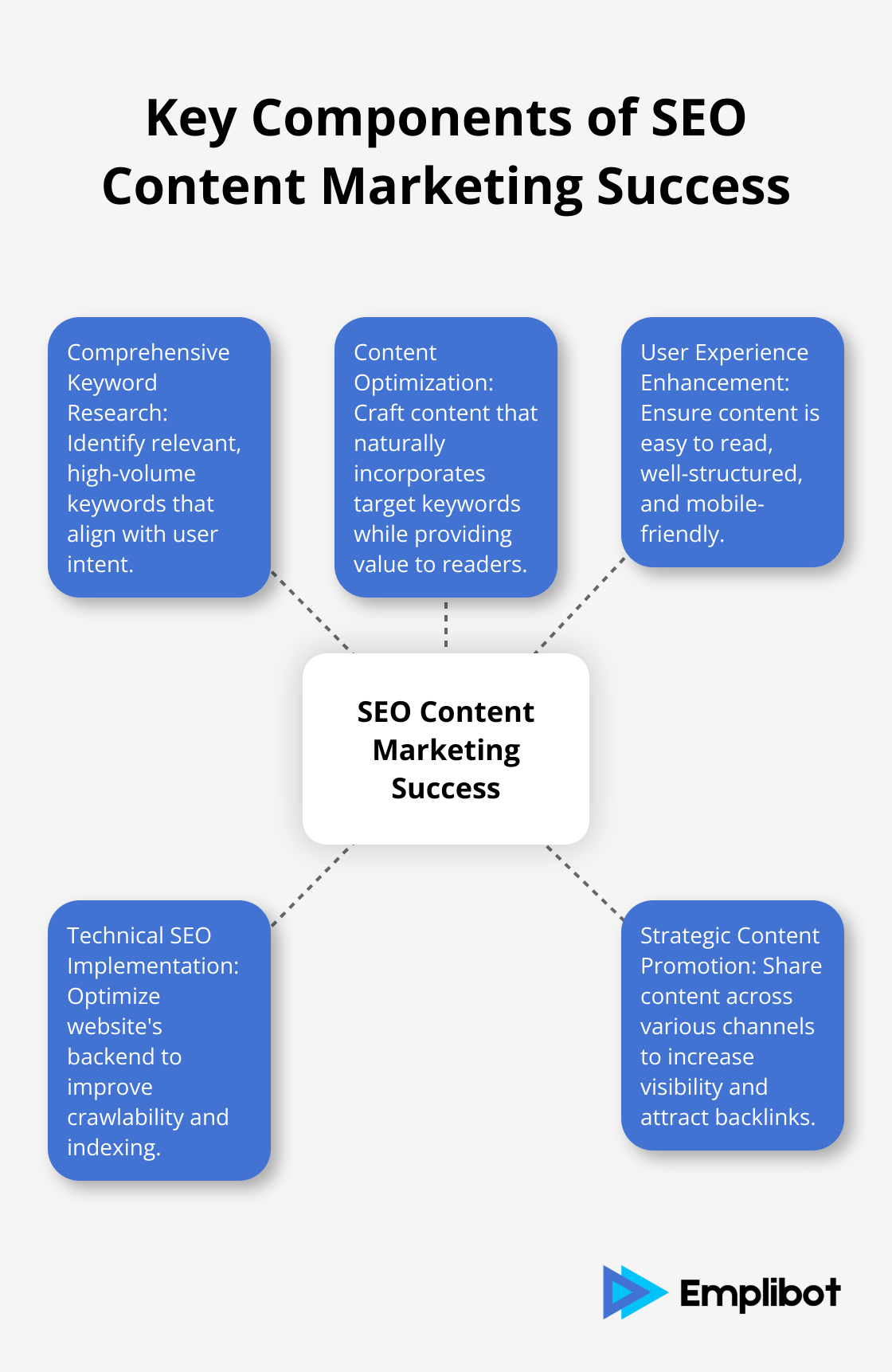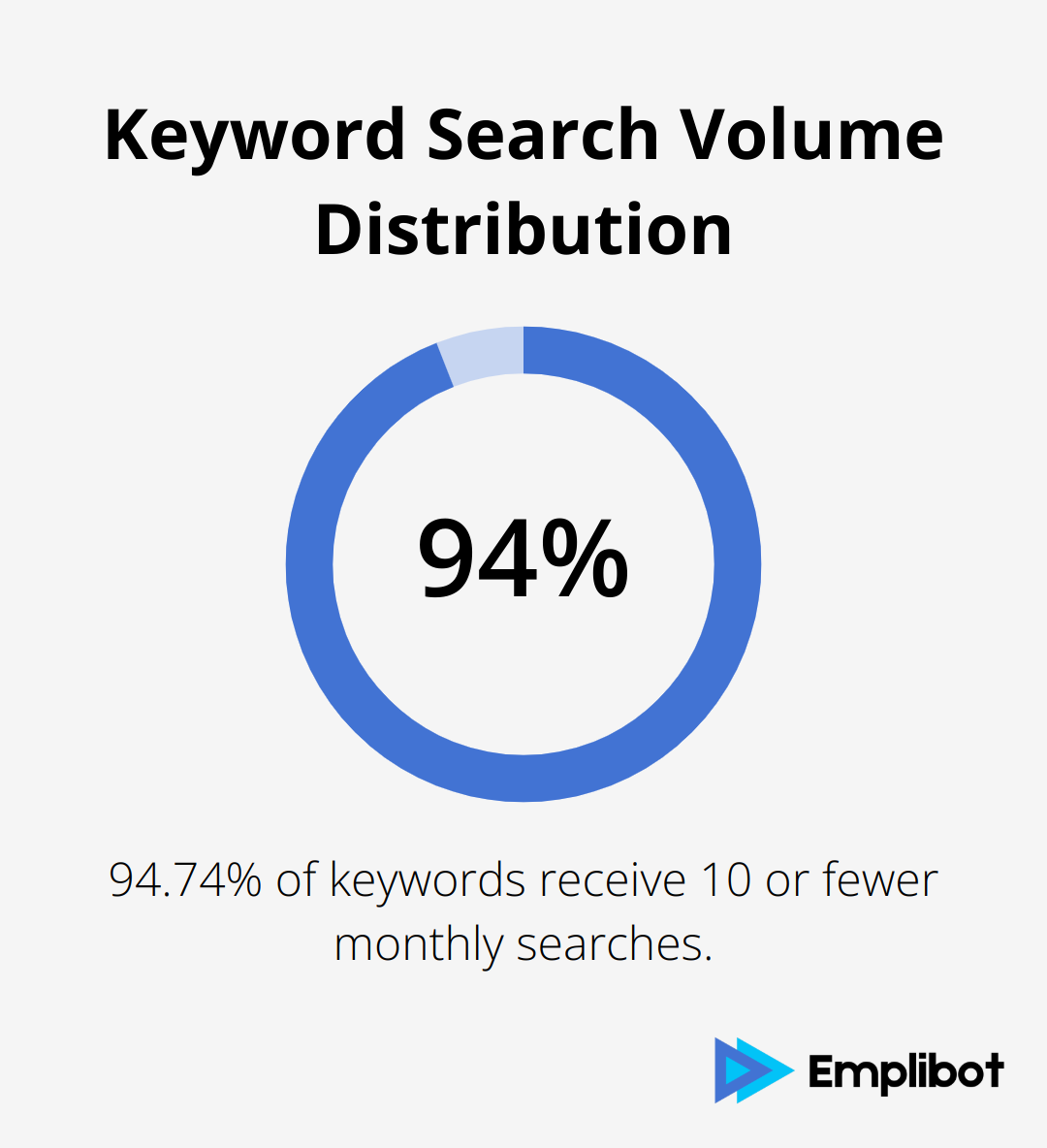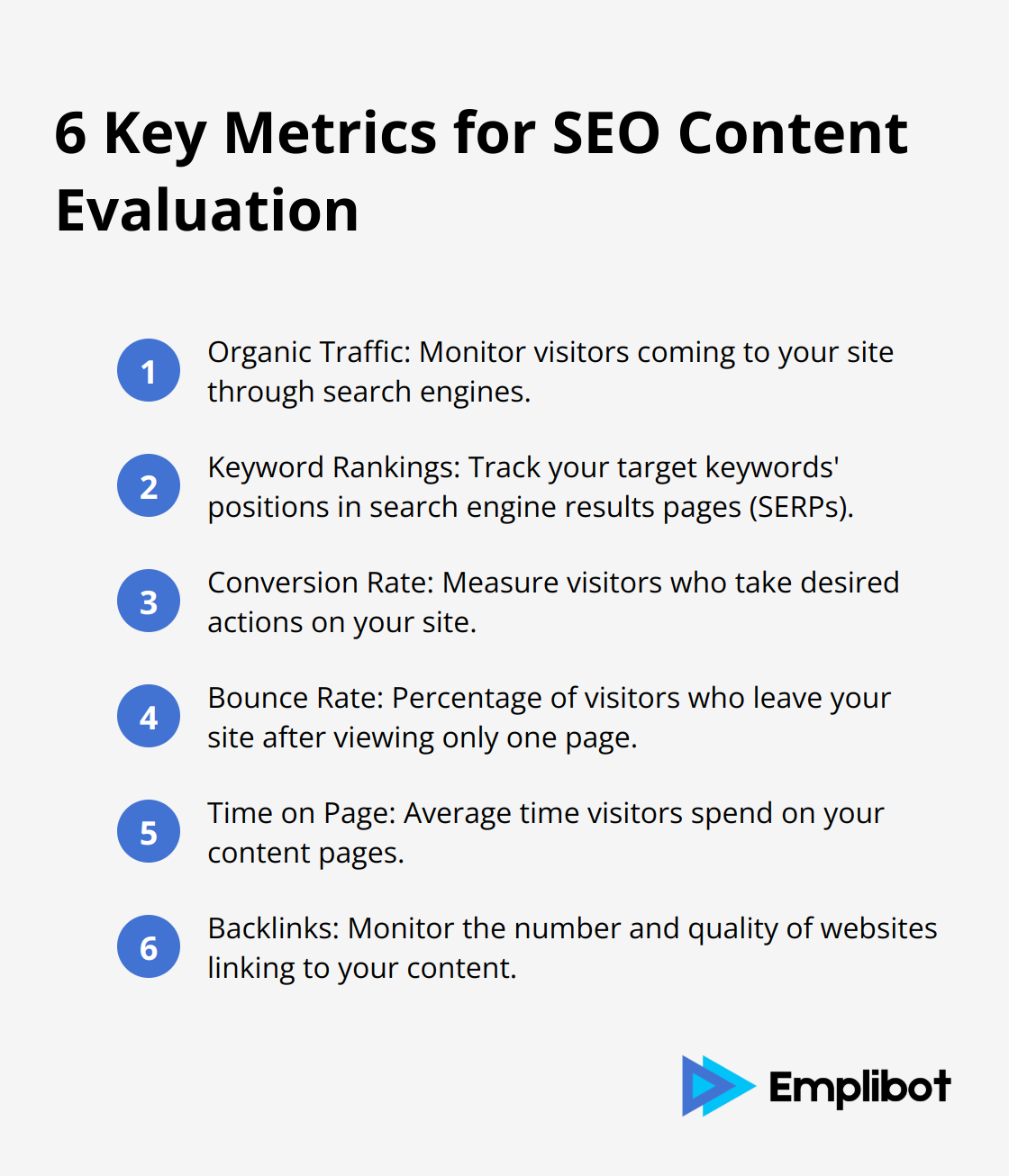At Emplibot, we’ve seen firsthand how SEO content marketing can transform a business’s online presence.
This powerful strategy combines the best of search engine optimization and content creation to drive organic growth.
In this post, we’ll explore the key components of successful SEO content marketing and show you how to craft an effective strategy that delivers results.
Contents
ToggleWhat Is SEO Content Marketing?
The Fusion of SEO and Content
SEO content marketing combines search engine optimization techniques with high-quality content creation to boost organic visibility and drive sustainable growth. This strategy doesn’t just involve keyword stuffing; it focuses on creating valuable, relevant content that addresses user needs while satisfying search engine algorithms. The result? Higher rankings, increased organic traffic, and improved user engagement.
A knowledge of basic SEO can have a noticeable impact on your content marketing efforts. Exploring Google’s SEO starter guide can provide an overview of search engine optimization essentials.
Quality Content: The Engine of Organic Growth
Consistent production of high-quality, optimized content powers organic growth. This content should answer user queries, provide valuable insights, and establish your brand as an authority in your niche.
Recent research underscores the importance of regular content production. If your blog isn’t at least a year old, you should aim to publish 6-8 posts a month around a few important and promising topics. This approach can help drive organic growth and increase traffic to your site.
Key Components for SEO Content Marketing Success
A successful SEO content marketing strategy hinges on several essential components:
- Comprehensive Keyword Research
Identify relevant, high-volume keywords that align with user intent. This research forms the foundation of your content strategy.
- Content Optimization
Craft content that naturally incorporates target keywords while providing value to readers. The goal is to create content that resonates with both search engines and users.
- User Experience Enhancement
Ensure your content is easy to read, well-structured, and mobile-friendly. A positive user experience contributes to better engagement and higher search rankings.
- Technical SEO Implementation
Optimize your website’s backend to improve crawlability and indexing. This step ensures search engines can easily find and understand your content.
- Strategic Content Promotion
Share your content across various channels to increase visibility and attract backlinks. This promotion amplifies your content’s reach and impact.

The Role of Analytics in SEO Content Marketing
Implementing these components is just the beginning. To truly excel in SEO content marketing, you must continuously analyze and refine your strategy. Tools like Google Analytics (for traffic insights) and SEMrush (for keyword performance) provide valuable data to inform your decisions.
Regular analysis allows you to identify top-performing content, understand user behavior, and adjust your strategy accordingly. This data-driven approach ensures your SEO content marketing efforts remain effective and aligned with your business goals.
As we move forward, let’s explore how to craft an effective SEO content strategy that puts these principles into action and drives tangible results for your business.
How to Build a Winning SEO Content Strategy
Conduct Thorough Keyword Research
Keyword research forms the backbone of any effective SEO content strategy. Tools like Ahrefs or SEMrush help identify high-volume, low-competition keywords relevant to your niche. Focus on long-tail keywords, which often yield higher conversion rates. For instance, instead of targeting “digital marketing,” try “digital marketing strategies for small businesses.”
An Ahrefs study revealed that 94.74% of keywords receive 10 or fewer monthly searches. This statistic underscores the value of targeting long-tail keywords, which tend to be less competitive and more specific to user intent.

Create Problem-Solving Content
After identifying target keywords, create content that genuinely addresses user needs. Google’s search quality evaluator guidelines emphasize the importance of E-A-T (Expertise, Authoritativeness, and Trustworthiness) in content.
To achieve this, consider:
- Thorough topic research
- Inclusion of data from reputable sources
- Provision of actionable advice
- Use of real-world examples or case studies
For example, when writing about “how to improve website speed,” don’t just list generic tips. Provide step-by-step instructions, recommend specific tools, and share before-and-after metrics from successful speed optimizations.
Optimize for Search Engines and Users
While keyword optimization matters, don’t sacrifice readability for keyword density. Google’s natural language processing now understands context without exact keyword matches.
Practical optimization tips include:
- Use of primary keyword in the title, first paragraph, and at least one H2
- Natural inclusion of related keywords throughout the content
- Optimization of meta descriptions and image alt text
- Use of internal linking to connect related content
- Ensuring mobile-friendliness and fast loading times
A Backlinko study found that the average Google first page result contains 1,447 words. This suggests that comprehensive, in-depth content tends to perform well in search results (though not every piece needs to be this long).
Maintain a Consistent Publishing Schedule
Consistency plays a key role in content marketing. However, quality should never take a backseat to quantity. It’s preferable to publish one high-quality, well-researched piece per week rather than daily content of questionable value.
To maintain consistency:
- Create a content calendar
- Batch your content creation
- Consider AI tools to assist with research and writing
- Build a backlog of evergreen content for busy periods
SEO content strategy requires ongoing effort, analysis, and refinement. The next chapter will explore how to measure and analyze the performance of your SEO content, ensuring your strategy continues to drive organic growth for your business.
How to Measure SEO Content Success
Key Metrics for SEO Content Evaluation
Measuring the performance of your SEO content is essential for strategy refinement and long-term success. Focus on these critical metrics:

- Organic Traffic: Monitor visitors coming to your site through search engines. A steady increase indicates well-ranking content that attracts clicks.
- Keyword Rankings: Track your target keywords’ positions in search engine results pages (SERPs). Semrush’s Position Tracking tool can help you monitor daily ranking changes across a set of custom keywords for specific devices.
- Conversion Rate: Measure visitors who take desired actions on your site (e.g., newsletter sign-ups or purchases). A high rate suggests content that effectively addresses user needs and drives action.
- Bounce Rate: This percentage shows visitors who leave your site after viewing only one page. A low bounce rate often indicates engaging and relevant content.
- Time on Page: The average time visitors spend on your content pages can indicate how engaging and valuable your content is to readers.
- Backlinks: Monitor the number and quality of websites linking to your content. High-quality backlinks can significantly boost your search rankings and domain authority.
Powerful Tools for SEO Content Analysis
To effectively track these metrics, use these powerful SEO tools:
- Google Search Console: This free tool provides insights into your site’s search performance (impressions, clicks, and average position for specific keywords).
- Google Analytics: Use this platform to analyze user behavior, traffic sources, and conversion data. It’s essential for understanding how visitors interact with your content.
- SEMrush: This comprehensive SEO suite offers keyword tracking, competitor analysis, and content optimization suggestions.
- Ahrefs: Known for its backlink analysis capabilities, Ahrefs also provides excellent keyword research and content performance tracking features.
- Screaming Frog: This tool crawls your website to identify technical SEO issues that might affect your content’s performance.
Data Interpretation for Strategy Refinement
After data collection, analyze and act on your insights effectively:
- Identify Top-Performing Content: Look for pages with high organic traffic and engagement. Analyze what makes these pieces successful and apply those insights to future content.
- Optimize Underperforming Pages: For pages with low traffic or high bounce rates, update the content, improve keyword targeting, or enhance the user experience.
- Capitalize on Keyword Opportunities: Use your keyword ranking data to identify terms where you’re close to ranking on the first page. Focus on optimizing content for these keywords to boost your visibility.
- Improve Internal Linking: Analyze your site structure and enhance internal linking to distribute link equity and guide users to related content.
- Take a data-driven approach: Use analytics tools to measure the performance of your content and make data-driven decisions to optimize your strategy.
SEO tracking requires ongoing effort. Review your metrics regularly, test new strategies, and adapt your approach based on the results. This consistent measurement and refinement of SEO content efforts will drive sustainable organic growth and keep you ahead of the competition in the ever-evolving digital landscape.
Final Thoughts
SEO content marketing proves a powerful strategy for organic growth and online presence. It combines search engine optimization with quality content creation to attract targeted traffic, improve rankings, and increase conversions. The future of SEO content marketing will involve voice search optimization, mobile-first indexing, and AI-driven content creation.
Businesses should start with thorough keyword research and create valuable content that addresses audience needs. Optimizing for search engines and users, maintaining a consistent publishing schedule, and analyzing performance metrics will refine your approach. SEO content marketing requires patience and persistence to build a sustainable foundation for long-term organic growth.
Tools like Emplibot can streamline SEO content marketing efforts. Emplibot automates various aspects of content creation and distribution, allowing businesses to maintain a consistent online presence without sacrificing quality or authenticity. Focus on creating valuable content, optimizing for search engines, and refining your approach based on data-driven insights to achieve sustainable online success.










